 While migrating between Northwestern Montana and Arizona, critically-acclaimed fine art photographer Glenn Barclay partakes in creating unique images that reflect his love for the simple pleasures that life has to offer. Through his travels and innovative approach to photography, Glenn has the ability to convey his very own unique vision with his viewers. Glenn is a perfectionist and as you browse through his photos below, I think you’ll agree that his work is visually stunning and exceptionally creative.
While migrating between Northwestern Montana and Arizona, critically-acclaimed fine art photographer Glenn Barclay partakes in creating unique images that reflect his love for the simple pleasures that life has to offer. Through his travels and innovative approach to photography, Glenn has the ability to convey his very own unique vision with his viewers. Glenn is a perfectionist and as you browse through his photos below, I think you’ll agree that his work is visually stunning and exceptionally creative.
If you’d like to learn more about Glenn’s work, please visit his website. You can also follow him on Instagram, Twitter and Fstoppers.
Glenn, thank you for sharing your thoughtful answers with us and for allowing us to get to know a bit about you. You are a brilliant photographer and someone whose work is definitely worth exploring.
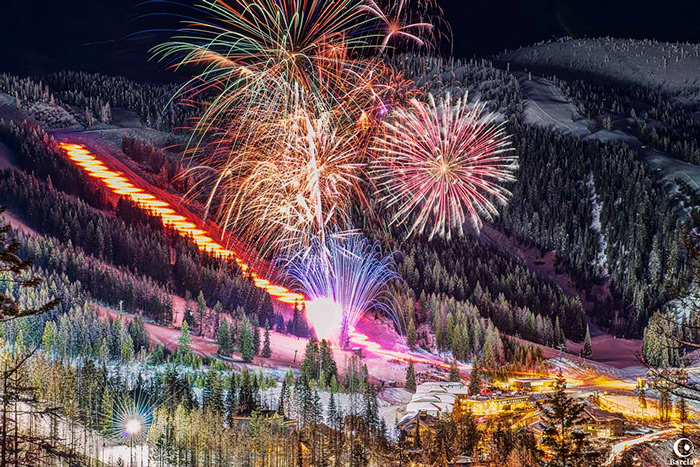
Would you please tell the readers about your background?
My background is in aviation, test pilot and flight instruction. I have two grown boys who live in northwestern Montana; they love snowboarding, video games, and the great outdoors. I grew up in the southwestern tip of Connecticut, close to the Big Apple. The area quickly got devoured by the New York metropolitan area and living there became “claustrophobic.” Needing some elbow room and a change of scenery I relocated to Vermont were I taught flying for several years and had two awesome boys. Years later we relocated to northwestern Montana.
Can you please tell the readers a bit about yourself?
Living in the moment is my motto and if you’re in a big hurry, keep going and try not to run me over. I like the simple pleasures in life and love living in the wilderness.
Where do you call home?
Northwestern Montana during the summers and Arizona for the winters, and everywhere else in between. Our migratory route takes us through the American Southwest or the Pacific and every “migration” I’ll find something new and interesting to photograph.
After browsing through your website, I see that you have built up an extensive collection of wonderful photography. When did you first become interested in photography and how long have you been involved with it?
When I was about four or five I picked up my Mom’s camera and shot the whole roll and surprise, the photos of around my house actually came out pretty darn ok. At that age, it was the coolest magic imaginable and I was hooked for life.
Are you formally-taught or self-taught?
Mostly self-taught through trial and error over the course of several decades. If I get stuck on something I’ll try and google a solution, something I couldn’t have done years ago. Trying to figure out Photoshop makes my head spin so recently I bought the book “Photoshop CS6 for Digital Photographers” and it helps.
Are you satisfied with your choice of getting involved with this industry? Is there anything else you would rather be doing?
Obviously you don’t get into photography for the money; it’s a labor of love and expression. Happy satisfied clients and art collectors are worth more to me than any monetary gain. After high school, I would have liked to have attended a “photography college” to at least learn the business. Also, I’ve always held a fascination for Cinema Photography and the complexities of the digital movie camera. It’s how I see things.
What does your day to day look like?
Coffee before anything else….. There was a time when I lived on Oxy’s for years and my day to day was spent minute by minute trying to mitigate moderate to severe low back pain. Years were spent waiting an hour for a pain killer to kick in while lying down on a heating pad. Long story short, severely painful sacroiliac joint arthritis from a car wreck I somehow managed to survive was the epicenter. Finally, kudos to DR. Carter Beck, I had two threaded cylinders screwed into that joint to fuse it. Today I am pain-free, Oxy free, and back on my feet. This period of my life, suffering in pain shaped my photography and pushed the “envelope.” I felt that my images became the polar opposite of oppressive chronic pain. Bold colors, surrealistic landscapes, and dreamy imagery were an escape, a panacea if you will.
What type of photography shoots do you look forward to?
Creative lifestyle portraits because of the challenge to accurately represent my client’s personality and lifestyle in a novel and creative way. The celestial calendar, I have a penchant for creating images on the Solstice and Equinox.
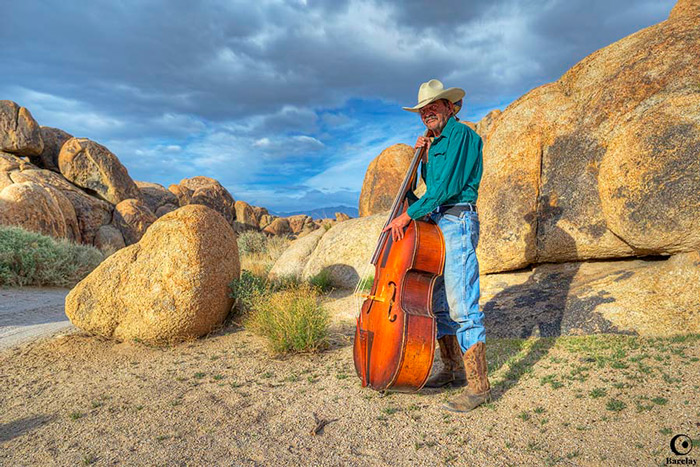
When shooting subjects, what do you find most challenging?
Getting everything technically perfect because I can’t fix blurry later on. My images are big and bigger and any technical flaw is easily revealed; that just won’t fly.
What is your favorite and least favorite part of owning your own photography business?
Copy Cats, yes they’re out there and yes they have copied my work. They steal my creative efforts. One photographer copied or tried to re-create my most published image of a ski resort in Whitefish Montana, Torch Parade. Although a poor copy, it won first place at the Northwest Montana Fair. Now that’s Just Nuts! And yes you know who you are…… The following year I entered “God and Country” and it won first place, so there!
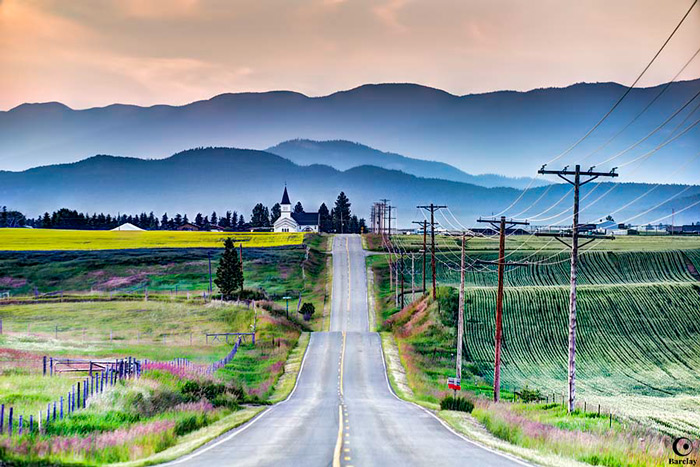
If there was one thing you would want prospective clients to know about you, what would it be?
Some of my images have had a tendency to increase in value over time. My very limited edition prints of 25 become retired after reaching that milestone. A few of my images have been purchased by art collectors; these have been only a “one of a kind.” Much like an oil painting, after the image has been purchased by an investor, that’s it, that image will never be reproduced.
What motivates you?
Customer satisfaction, there is just an extra special wow factor when looking at my creations on a super large gallery canvas print, wow! The way my images travel on the social grapevine makes me feel plugged into our digital universe.
How do you keep your photography fresh and how do you stay motivated to keep on learning?
There’s an ebb and flow or times of inspiration and times of “writer’s block”. But I would say that a change of scenery is always helpful. Sometimes driving around a scene will catch me in the peripheral and I’ll turn around and go back for a second look. Sometimes it’s just nothing but sometimes it’s a “Kodak moment” I’ll stew over and plan out. The biggest challenge is to create the image the way I see it and that can take up to a year in planning, then several more years in post-production.
Share with us your favorite image and why.
Spin Me Faster, For me, it was an adventure into uncharted technical territory. I had to find a location reasonably close to us here in Northwestern Montana. The location had to be located in a “Dark Sky” area or an area in the absence of city lights or light pollution. Extra battery power would be needed so I added a battery grip to my D800e that holds 8 AA batteries. Also, I was worried about a cold Montana October night and condensation so I wrapped my 14mmf2.8 super wide-angle lens in air-activated hand warmers and wrapped them with good old duck tape. The planned shoot needing to occur on a new moon for the darkest sky possible. And most important, the North Star or Polaris needed to be located somewhere in the frame of my image, preferably somewhere up and to the left or right. Obviously no night camping photograph is complete without a tent and I used my 27-year-old Kelty Windfoil 3. Preliminary shots included my tent illuminated internally with an LED light and with parking lights on my vehicle. Shooting began at about 11:30 pm, so I called it a night and crashed in my tent as the foreground shots have just been completed. My wife, Mary Ann slept in my Honda because she was worried that somehow she would mess up my project.
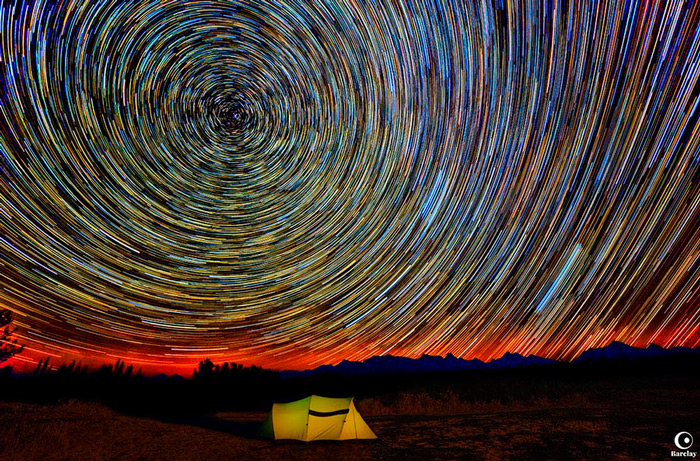
In the morning everything was frosted over including my very expensive camera. Our water had a frozen layer of ice on top, brrrrr. After I got my camera powered back up, I realized that my batteries died after about 2 hours and 20 minutes or about 115 shots, I got what I wanted. All of these images kept me busy intermittently for the next several years. It pushed me further and better than before, also I had to figure out a lot of technical things. When I realized that each star has its own color that’s when I went overboard with the “amplification”. I just kept running my image through Photoshop over and over to the point where I just could not tell you how and what I did. Basically, I treated every element separately and combined everything together as a finished image. Incidentally, I just received “Spin me Faster” four foot wide on canvas for an art collector and my client is over the moon.
What is one piece of advice you would like to offer a new photographer just starting out?
It’s all about the glass, not just good glass but excellent glass, after all, it’s what projects your picture on the image sensor. Your camera is just a light-proof box with buttons and knobs. Be bold and take some risk with your images. Sprinkle some shots on social media, you’ll know what’s hot and what’s not. But despite some less than stellar shots, keep moving forward with confidence knowing your horizon is greatly expanded.
What type of camera do you shoot with?
Nikon D800E, it just has a creamy smoothness higher pixel cameras just don’t seem to offer. And it’s cRaZy sharp! My opinion of course.
What is your favorite lens?
My Nikon 85mm f1.8G, relatively inexpensive and way sharp center to corner with no visible light falloff stopped down. It’s great for creating twelve-foot wide super high-resolution panoramas such as “Ocean to Ocean” bridge over the Colorado River in Yuma Arizona. Also my 14mm super-wide-angle, I’ve had some great results and some good fun. Interestingly, the 14mm has achieved great results with portraits because nobody likes a camera lens in their face.
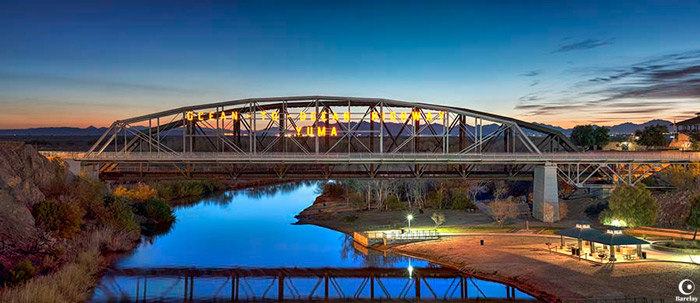
What is in your camera bag?
Nikon D800E, Manfrotto tripod, Rokinon 14mm f2.8 super wide, Nikon 24mm f1.8G wide-angle, a Nikon 50mm f1.8G, and a Nikon 85mm 1.8G very mild telephoto.
What is your favorite photography accessory?
A battery grip because the added weight helps steady the shot and gives my hand a little more real estate to hold onto. Plus it looks cool.
What piece of equipment would you most like to get but don’t have yet?
A pro-quality telephoto lens, preferably a 300mm because I love the effects of compression. “God and Country” is a great example of compression, created with a 200mm zoom I borrowed from my eldest son. You can see how atmospheric conditions such as forest fire smoke can add an ethereal glow. Distant elements come together with compression and work to enhance the overall image in a different but creative way.
How important is Photoshop or other image editing software in your final image?
I must confess there was a time in my teens when I had my own darkroom and I loved it! Today the digital darkroom is everything. I’ve been asked on occasion if I “photoshopped” a particular image and my answer is always the same, “you bet I did.”
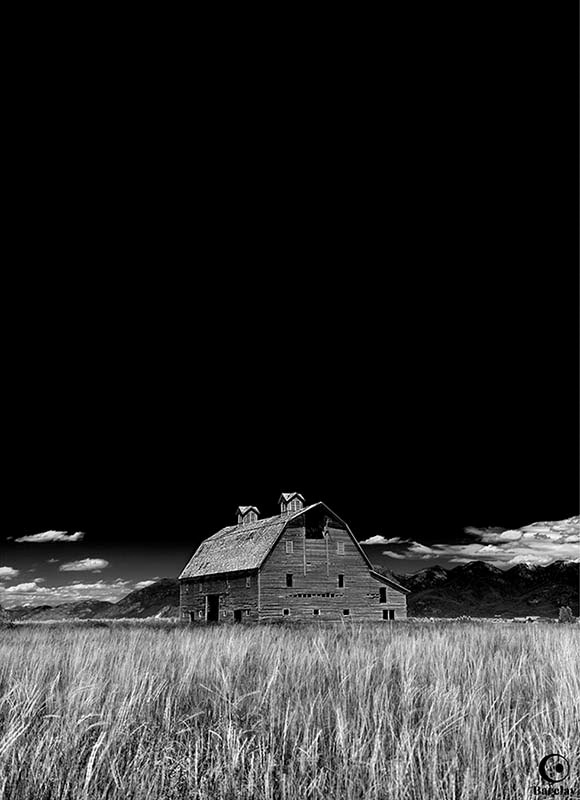
Can you share examples of your success and failures?
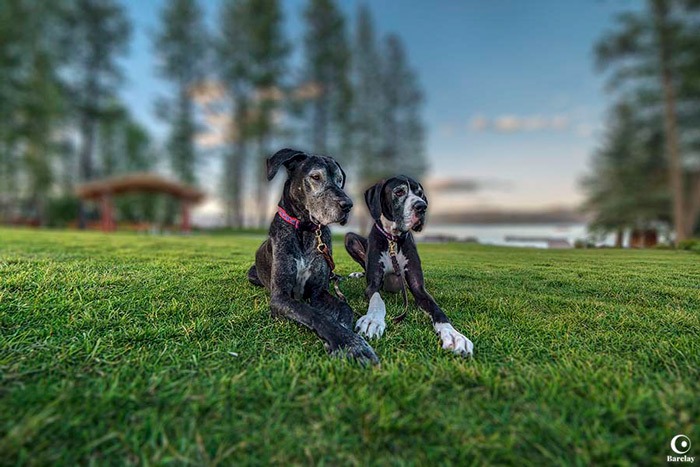
Trying to shoot pets is much more difficult than anyone could imagine. Dogs just glow with personality and I enjoy the challenge. I have learned that dogs have super quick “micro-movements” and shooting with a blistering fast shutter speed is necessary. My failures are experiments that I learned from. My successes get stolen and end up on everything from phone book covers to tire store banner ads and even a 24-foot panorama at a hospital of “Ocean To Ocean.” My fault really, I’m learning how to protect my stuff and you should too.
Was there a point in your artistic journey when you started to feel really good about your work?
If so, what did it feel like to get past that “tipping point?” God and Country, it just seemed so easy and natural to me but I still maintain that divine intervention was involved. I think someday it will be the image I’ll be known for. Back pain is over and I didn’t want my life to be defined by a car wreck but rather for my creative eye.
What do you think the future holds for you? Where do you see yourself in the next few years?
Africa, oh yeah, I would love to camp out in the wilds of the Serengeti for at least one year photographing what’s left of our wildlife. More realistically, we would like to expand our nomadic lifestyle.
Do you see yourself as a photographer many years down the road?
Absolutely, in what little road is left I am intent on leaving behind a lasting legacy.
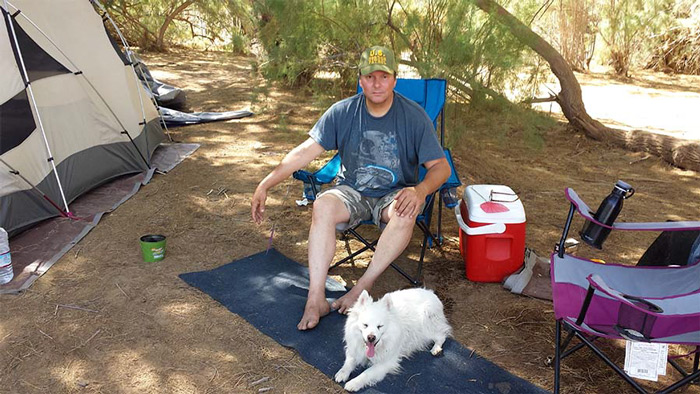
Leave a Reply